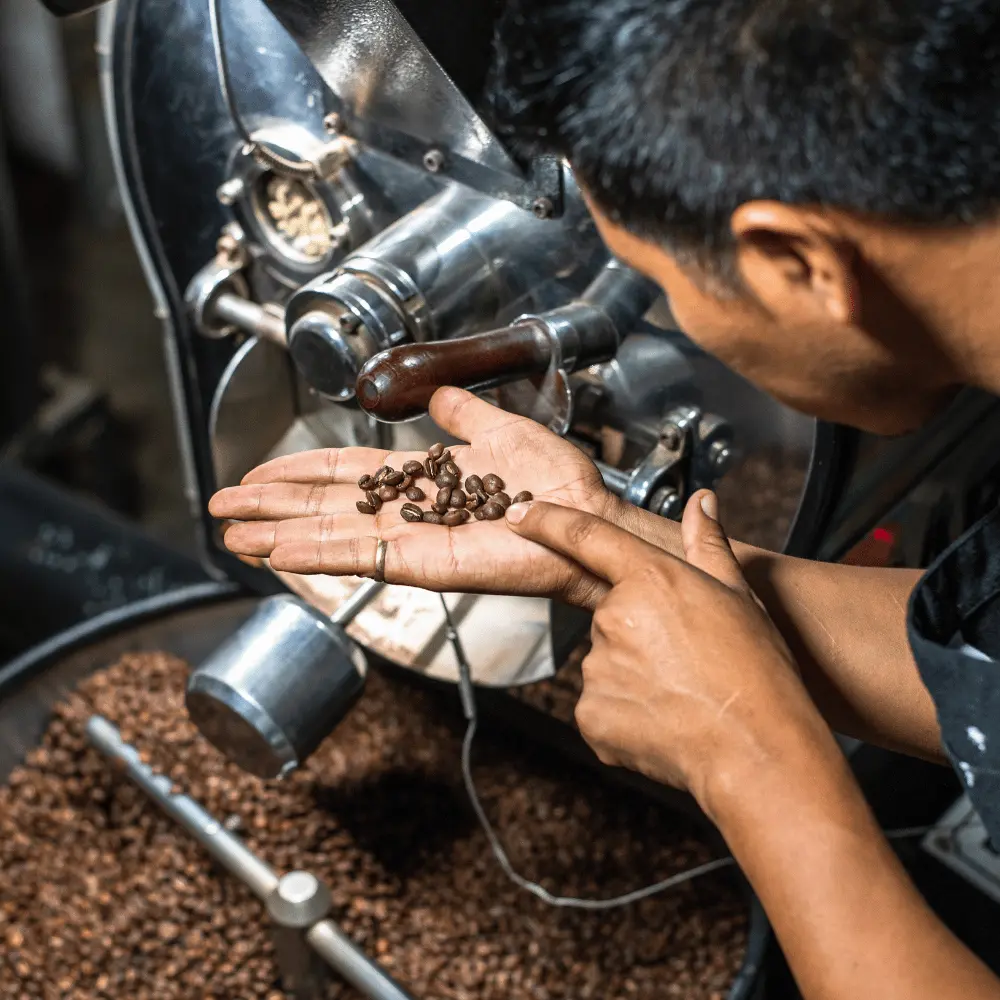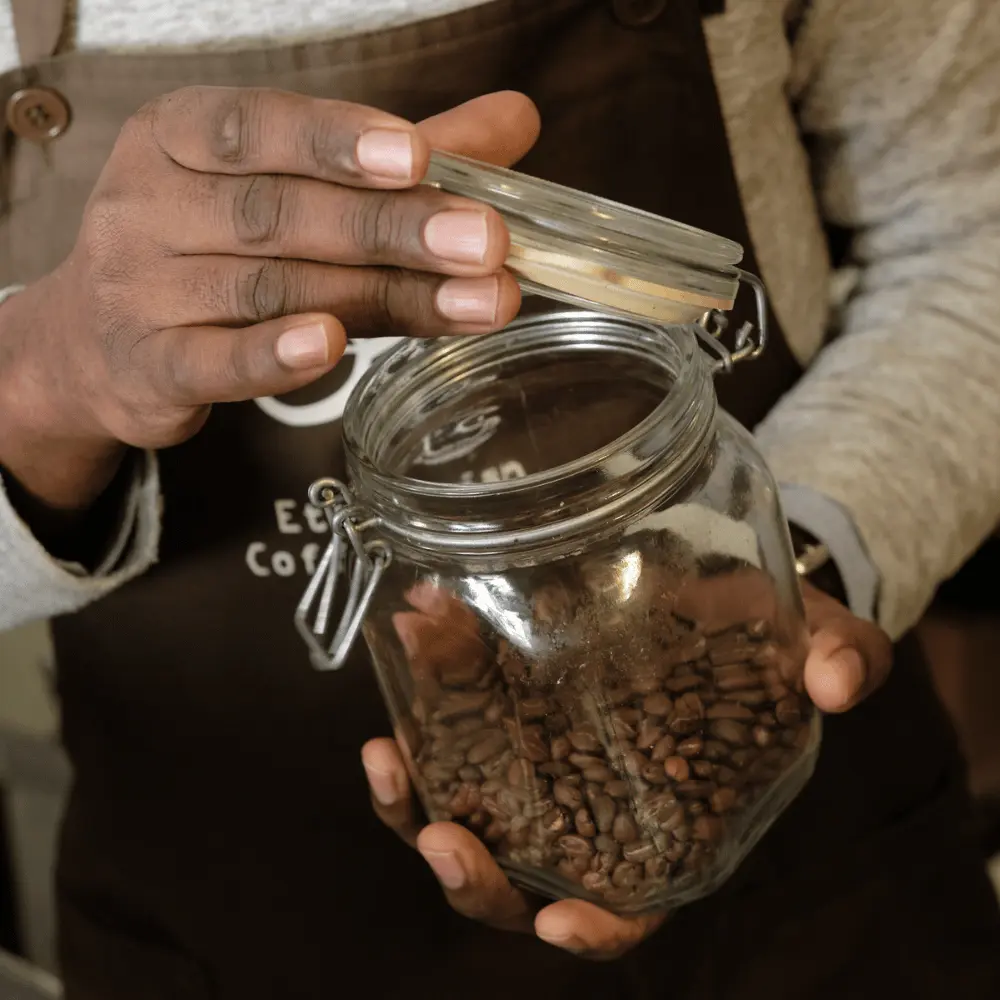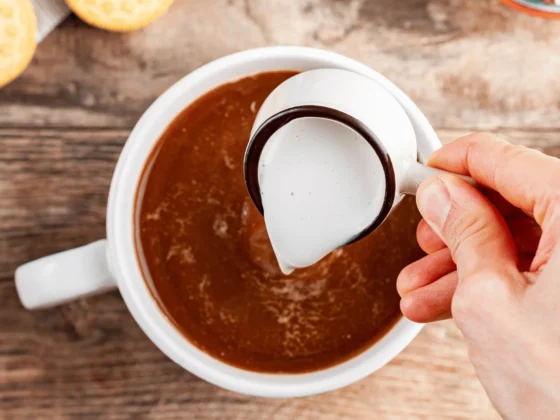For those who adore the bitter and robust flavors of coffee, the situation of having to reheat a cup that has lost its warmth may be all too familiar. Perhaps you were preoccupied with other tasks and neglected your once-steaming cup of java, or maybe you brewed a pot of coffee in the morning and now desire a mid-afternoon pick-me-up. Regardless of the reason, the pressing question on your mind is likely: is reheating coffee a good idea?
In this all-encompassing article, we seek to provide you with the ultimate guide on reheating coffee. We’ll delve into the scientific basis behind the chemical changes that occur in coffee as it cools, clarifying why reheated coffee often fails to measure up to the taste of freshly-brewed coffee. Our goal is to address prevalent concerns about reheating coffee, including whether it’s safe to consume and how to prevent it from developing an unpleasantly bitter or burnt taste.

Our comprehensive approach to this matter has resulted in the structure of this article, which consists of several sections, each designed to focus on a specific aspect of reheating coffee. Beginning with an examination of the reasons why coffee can taste different when reheated, we’ll gradually move on to explore various methods of reheating coffee, such as using a microwave or stovetop. Furthermore, we’ll share tips on how to ensure that your reheated coffee tastes as similar to the original brew as possible.
Upon reading this article in its entirety, you’ll acquire a profound understanding of the best practices for reheating coffee and learn how to steer clear of common mistakes that can result in an underwhelming cup of coffee. So, regardless of whether you’re a coffee aficionado or seeking ways to reduce waste, this definitive guide on reheating coffee is an indispensable resource.
Understanding Coffee Freshness
Coffee freshness, a crucial aspect of savoring a delectable cup of coffee, is defined by the fleeting period in which coffee beans are at their peak for consumption. This temporal window is contingent upon various factors, such as the roast date, storage conditions, and brewing methods. Understanding these factors is pivotal in grasping the importance of freshness when reheating coffee.
Roast Date

The roast date is one of the most significant factors affecting coffee freshness. Within two to four weeks after being roasted, coffee beans are at their freshest, contingent upon the specific roast level. This is because coffee beans contain volatile organic compounds that begin to degrade soon after roasting, which causes a loss of flavor and aroma. When reheating coffee, the original roast date significantly impacts the flavor. If the coffee is already past its prime, reheating cannot restore its full flavor.
Coffee Storage

Storage conditions are another key factor impacting coffee freshness. Exposure to light, air, moisture, and heat can all contribute to the deterioration of coffee beans. To preserve maximum freshness, it is imperative to store coffee beans in an airtight container, in a cool, dry, and dark place. When reheating coffee, the storage conditions of the original coffee will affect the flavor, so it is best to store coffee beans correctly from the beginning.
Coffee Brewing Method

Brewing methods are also crucial to consider when it comes to coffee freshness. Different brewing methods extract distinct compounds from the coffee beans, resulting in diverse flavor profiles. Some brewing methods, such as pour-over or espresso, are more adept at extracting the delicate and complex flavors of freshly roasted coffee beans, while other methods, such as French press or drip coffee, are more suited to more robust and earthy flavors. When reheating coffee, the original brewing method can impact the final taste, as some methods may not be as effective in bringing out the best flavors in reheated coffee.
Comprehending the concept of coffee freshness and the diverse factors that influence it can help you understand the significance of using fresh coffee when reheating. The roast date, storage conditions, and brewing method are all vital considerations for obtaining the best possible taste in a reheated cup of coffee. By adhering to the best practices for storing and brewing fresh coffee, you can ensure that even reheated coffee retains its full flavor and aroma.
Is It Safe to Reheat Coffee?
Are you perplexed about the safety of reheating your beloved coffee? You’re definitely not alone. The concerns of many coffee drinkers are valid as there are potential health risks associated with reheating coffee. Bacteria can multiply rapidly in coffee that has been left out for too long, leading to health problems when consumed. Sadly, reheating coffee can also aggravate this risk by creating an environment that supports bacteria growth.

The primary health risks associated with stale coffee are related to bacterial growth. Improper storage and prolonged exposure to room temperature can cause bacteria to flourish, leading to food poisoning that results in symptoms such as vomiting, nausea, and diarrhea.
How Reheating Coffee Can Exacerbate the Risks
Reheating coffee can exacerbate the risks of consuming stale coffee. When coffee is reheated, it creates an ideal warm and moist environment for bacteria to grow. This is particularly concerning when the coffee has been left out for an extended period at room temperature before being reheated. The heat from reheating can also cause chemical changes in the coffee, creating new compounds that may be harmful to consume.
Increased Bacteria Growth in Reheated Coffee
Another concern that arises from reheating coffee is the increased growth of bacteria. Improper storage and prolonged exposure to room temperature can lead to bacteria multiplication, particularly when the coffee is freshly brewed. Reheating coffee that has been sitting out for an extended period can increase the risk of bacterial growth, particularly for individuals with weakened immune systems.
To minimize the risk of bacterial growth in reheated coffee, it’s crucial to follow proper food safety practices when storing and reheating coffee. This includes keeping coffee in airtight containers in the refrigerator and only reheating the amount of coffee that you plan to consume right away.
When reheating coffee, it’s essential to ensure that the coffee reaches a temperature of at least 165°F (74°C) to kill any harmful bacteria that may be present. Using a thermometer to check the temperature of the coffee can accomplish this. It’s also crucial to reheat coffee only once and avoid reheating the same coffee multiple times.

In addition to proper food safety practices, being mindful of the signs of spoiled coffee is also crucial. Discard coffee that smells sour or rancid or has an unusual taste or appearance rather than reheating it.
By adhering to proper food safety practices and being mindful of the signs of spoiled coffee, you can reduce the risk of bacterial growth in reheated coffee and ensure that your coffee is safe and healthy to consume.
Guidelines for Safe Reheating
Reheating coffee can be a precarious task that requires careful attention to ensure food safety. To minimize the risk of contracting a perilous case of food poisoning, it is crucial to adhere to some guidelines. Here are some perplexing and bursty guidelines to follow:
Use a clean container
Firstly, it is of paramount importance to utilize a pristine container when reheating coffee. This measure will prohibit bacteria from contaminating your beverage, which could be deleterious to your well-being. Furthermore, it is advisable to abstain from using plastic containers as these could emit dangerous substances when subjected to heat. A preferable alternative is to use glass or ceramic containers which are less likely to pose any risk to your health.
Don’t let coffee sit out for too long
Secondly, procrastination is not your friend when it comes to reheating coffee. You should endeavor to reheat your coffee as soon as possible after brewing it. Leaving it at room temperature for a prolonged period is a recipe for disaster. This environment creates a breeding ground for bacterial growth which could have harmful consequences.
Reheat to the appropriate temperature
Thirdly, it is important to ensure that the temperature of the reheated coffee is appropriate. Reheat the coffee to a minimum of 165°F, as this will eliminate any existing bacteria. To verify the temperature, use a thermometer to ascertain that the coffee has reached the required heat.
Don’t reheat coffee more than once
Lastly, reheating coffee multiple times is ill-advised. This practice could trigger bacterial growth which could result in food poisoning. It is recommended that you reheat your coffee only once to reduce the risk of food poisoning.
While reheating coffee is a regular occurrence, it is not without risks. It is therefore imperative to adhere to the aforementioned guidelines to guarantee food safety. Ensure that you store your coffee correctly and reheat it to the appropriate temperature to enjoy a delectable cup of reheated coffee without jeopardizing your health.

How to Reheat Coffee
Are you vexed by the thought of reheating your cold coffee? Worry not, as there are myriad ways to do so. However, choosing the optimal method depends on a range of factors, including your personal preferences and unique circumstances. In this segment, we’ll delve into the different techniques for reheating coffee and provide you with useful tips and tricks to achieve the best results.
Reheating Coffee in Microwave

Microwaving coffee is a prevalent and easy way to reheat your java, but it’s critical to take specific measures to ensure that it’s reheated safely and effectively. Here are the steps you need to follow to reheat your coffee using a microwave:
- Pour the required amount of coffee into a container that’s safe for use in a microwave. This will prevent the container from melting or causing a fire, which could be hazardous.
- Cover the container with either a microwave-safe lid or a piece of microwave-safe plastic wrap. This will prevent any coffee from spilling or splattering inside the microwave.
- Set your microwave to high power and heat the coffee for 30 seconds. The duration of time required to reheat the coffee will be influenced by the quantity of coffee being reheated and the strength of your microwave. It’s recommended to start with 30 seconds, and then measure the temperature of the coffee before heating it further.
- Verify the temperature of the coffee using a thermometer. It’s crucial to ensure that the coffee is heated to at least 165°F (74°C) to destroy any harmful bacteria that may be present. If the temperature hasn’t reached this level, continue heating the coffee for 15-second intervals, checking the temperature after each interval.
- Take the container out of the microwave and give the coffee a good stir. This will help to distribute the heat evenly and ensure that the coffee is heated thoroughly.
- Take a sip of the coffee to check the flavor. If it has an unusual taste or aroma, it might have gone stale and should be thrown away instead of being reheated.
By following these instructions, you can safely and effectively reheat your coffee in the microwave.
Keep in mind that the time and temperature required to reheat coffee may vary depending on the amount of coffee being reheated and the power of your microwave. To be on the safe side, always use a thermometer to ensure that the coffee has been heated to a safe temperature before you drink it
Reheating Coffee on a Stove Top

The art of reheating coffee on a stovetop can be a laborious task, yet it may yield a more satisfactory outcome than the microwave. Below are the steps one must take to reheat coffee on a stovetop:
- The first step is to pour the desired amount of coffee into a petite saucepan or pot, taking caution not to overflow the pot.
- Adding a minuscule amount of water or milk can aid in preventing the coffee from scorching or burning. Initially, begin with a mere splash of liquid, and then alter the amount according to the quantity of coffee being reheated.
- Heat the coffee on low heat on the stovetop, stirring occasionally to ensure uniform heating and prevent the formation of a film on the surface.
- To evade overheating the coffee, use a thermometer to verify the temperature. The optimal temperature for reheated coffee is between 150-160°F (65-71°C).
- Once the coffee has been heated to the desired temperature, pour it meticulously into a cup or mug and serve it instantaneously.
It is essential to note that reheating coffee on a stovetop can be a time-consuming process. Nevertheless, it is a splendid option if you lack access to a microwave or prefer not to use one. Furthermore, utilizing a stovetop to reheat coffee can help preserve its flavor and aroma, making it an exceptional alternative for coffee connoisseurs who are finicky about the taste of their coffee.
Alternatives to Reheating Coffee
Consider this, my dear reader: reheating coffee may appear to be the most effortless method to rejuvenate a chilly cup, but I implore you to ponder this notion further. Depending on the manner in which the coffee was brewed and its type, reheating it can distort its flavor and aroma, rendering it less delectable to consume. Thus, if you seek substitutes for reheating coffee, allow me to offer some thought-provoking recommendations:
Incorporate it into a coffee-based recipe: the residue of coffee can be employed as an ingredient in various recipes, ranging from baked delicacies to marinades. For instance, you may employ it in preparing coffee cake, tiramisu, or even a coffee-infused rub for steak. By doing so, you can indulge in the flavor of coffee without consuming it hot.
Transform it into iced coffee: if your preference is cold coffee, consider using your leftover coffee to prepare iced coffee. Simply pour the frigid coffee over ice and add any preferred flavorings or milk. You may also experiment with creating your own coffee-based beverages, such as a latte or a Frappuccino.
Preserve it by freezing it for later: an additional option is to freeze the coffee in an ice cube tray and utilize it in the future as a flavor enhancer in other beverages. For example, you can add coffee cubes to a glass of milk or use them to create a coffee-flavored smoothie.
Brew Fresh Coffee Instead
Although the prospect of reheating coffee can be tempting, these alternatives can provide an innovative and stimulating means of utilizing your remaining coffee. By exploring some of these ideas, you may even discover a new preferred method of indulging in coffee.
Consider brewing a fresh cup of coffee instead of reheating your stale coffee using one of the many available methods such as drip brewing, French press, pour-over, and more. Reheated coffee is widely recognized as inferior to freshly brewed coffee, which can taste much better and is less likely to pose health risks.
Brewing fresh coffee is straightforward and allows you to control the temperature and strength of your coffee, and to experiment with different brewing methods, coffee-to-water ratios, and brewing times until you achieve the perfect cup. The full flavor and aroma of the coffee can be enjoyed without the potential negative effects of reheating.

Freshly brewed coffee has additional advantages besides better taste and quality. It also eliminates the risk of acrylamide formation and bacteria growth that is commonly associated with reheated coffee. Freshly brewed coffee is usually free of harmful chemicals or bacteria that can form when coffee is left out or reheated.
Although brewing fresh coffee may require more time and effort than reheating coffee, the benefits are usually worthwhile. With some practice and experimentation, you can create a delicious and healthy cup of coffee that is both satisfying and fulfilling.
So, Should You Reheat Coffee? Our Conclusion
In culminating this discourse, it is imperative to note that the process of reheating coffee is a customary practice among coffee enthusiasts, although it is crucial to execute it appropriately in order to circumvent tampering with the flavor and quality of the coffee. By implementing the tips and techniques outlined in this article, one can assimilate the art of reheating coffee while maintaining its flavor and aroma.
Furthermore, it is of utmost importance to comprehend the substitutes to reheating coffee, such as integrating it into recipes or transforming it into a refreshing glass of iced coffee. These procedures can provide a novel and gratifying way of utilizing remaining coffee and bypassing the latent dangers associated with reheating.
We implore our readers to share their personal experiences and techniques for reheating coffee. By sharing our knowledge and learning from others, we can enhance our coffee consumption experience and relish a more flavorful cup of coffee each and every time.
So, the subsequent instance that you possess any residual coffee, contemplate the manifold options available to you and delve into various methodologies. With a hint of ingenuity and a prudent approach, you can transmute your remnant coffee into a palatable and satiating beverage.
FAQ
How can you detect spoiled coffee?
You can discern spoiled coffee by its stench and taste. If your coffee smells or tastes stale, rancid, or tart, it might have gone bad. Additionally, if you notice mold or discoloration, it's best to dispose of it.
Can you reheat coffee more than once?
Reheating coffee multiple times is not advisable as it may adulterate the coffee's flavor and fragrance, leaving it unenjoyable to savor.
Why does reheated coffee have a lousy taste?
When coffee is reheated, the chemical structure transforms, making it taste acrid and sour. Additionally, reheating the coffee can cause it to lose its aroma and flavor.
How can you enhance the taste of reheated coffee?
If you want to improve the taste of reheated coffee, try adding a dash of salt or sugar, some cream or milk. Alternatively, try adding some cinnamon or other spices to invigorate the flavor.
Is it secure to consume day-old coffee?
Typically, day-old coffee is safe to drink, but it may not taste as fresh as a freshly brewed cup. If the coffee has been at room temperature for an extended period, it's best to discard it.
Can you reheat coffee in a paper cup?
It's not recommended to reheat coffee in a paper cup as the cup may combust or release chemicals into the coffee when heated.
Can you reheat coffee with milk in it?
Reheating coffee with milk may cause the milk to curdle, altering the coffee's taste and consistency. To avoid this, it's best to add the milk after reheating the coffee.
How long is reheated coffee viable?
Reheated coffee lasts a few hours before it starts to lose its aroma and flavor. It's best to drink the coffee soon after reheating it.
Is it safe to drink coffee left out overnight?
Drinking coffee that has been left out overnight is not recommended as bacteria may proliferate, causing illness. It's best to dispose of the coffee and prepare a fresh batch.













